
(PDF) Estimation of the photosynthetic action spectrum Implication for primary production models
The photosynthetic action spectrum compares the relative photosynthetic QY per wavelength, and indicates that wavelengths between 575 and 675 nm are ~30% more efficient for photosynthesis.
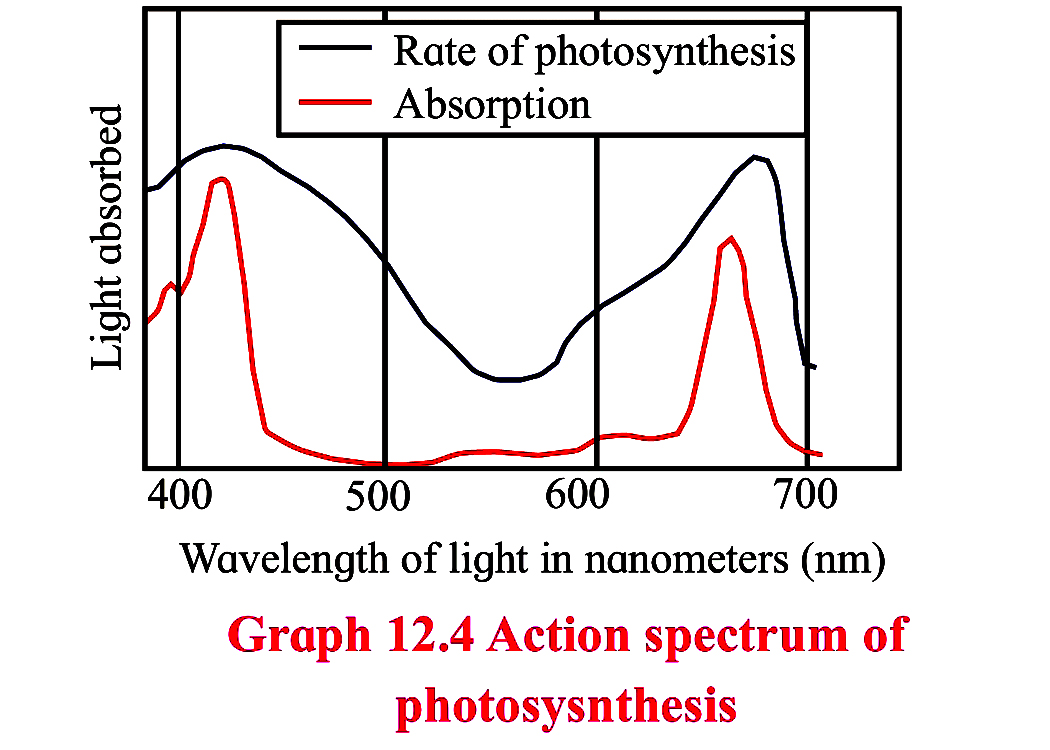
12 photosynthesis part 02 Nature of Light
In photosynthesis, the sun's energy is converted to chemical energy by photosynthetic organisms. However, the various wavelengths in sunlight are not all used equally in photosynthesis. Instead, photosynthetic organisms contain light-absorbing molecules called pigments that absorb only specific wavelengths of visible light, while reflecting others.
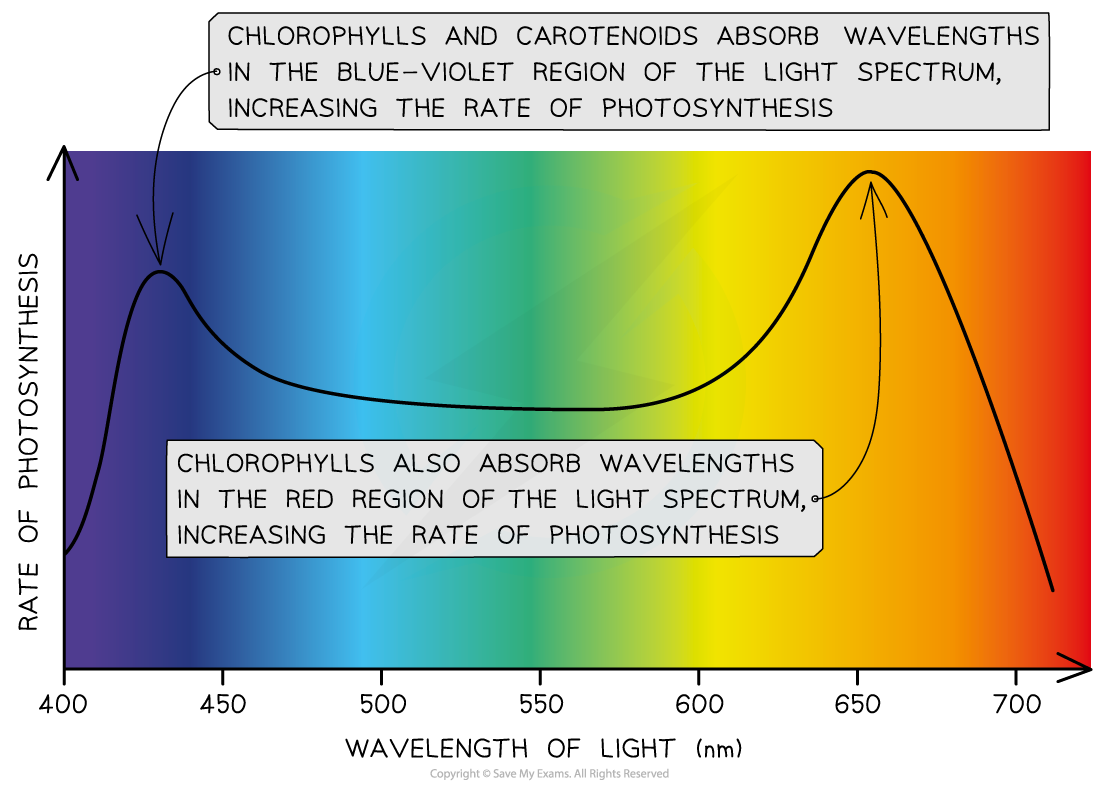
CIE A Level Biology复习笔记13.1.5 Absorption Spectra & Action Spectra翰林国际教育
Introduction Defining PAR Photosynthetically active radiation (PAR) is commonly defined as electromagnetic radiation in the waveband between 400 and 700 nm, or 0.400-0.700 μm [ 1, 2, 4, 5 ].

CIE A Level Biology复习笔记13.1.5 Absorption Spectra & Action Spectra翰林国际教育
The action spectrum of photosynthesis below plots the results of this experiment. The spectrum shows that all wavelengths of visible light energy support photosynthesis. In addition, other experiments revealed that radiation other than visible light (e.g., ultraviolet and infrared light) do not support photosynthesis..

PPT Photosynthesis PowerPoint Presentation, free download ID2138719
Photosynthesis ( / ˌfoʊtəˈsɪnθəsɪs / FOH-tə-SINTH-ə-sis) [1] is a biological process used by many cellular organisms to convert light energy into chemical energy, which is stored in organic compounds that can later be metabolized through cellular respiration to fuel the organism's activities.
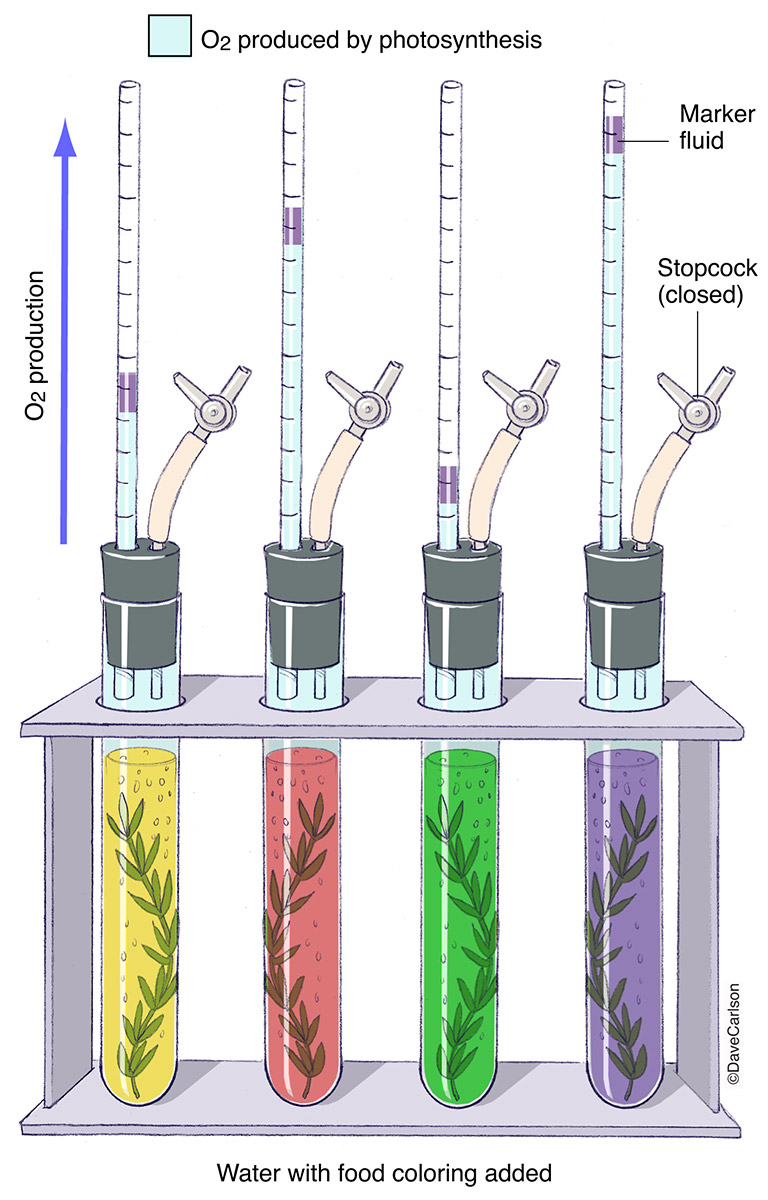
Photosynthesis Measurement Experiment Carlson Stock Art
An action spectrum is a graph that shows the rate of photosynthesis at different wavelengths of light The rate of photosynthesis is highest at the blue-violet and red regions of the light spectrum, as these are the wavelengths of light that plants can absorb (ie. the wavelengths of light that chlorophylls and carotenoids can absorb)
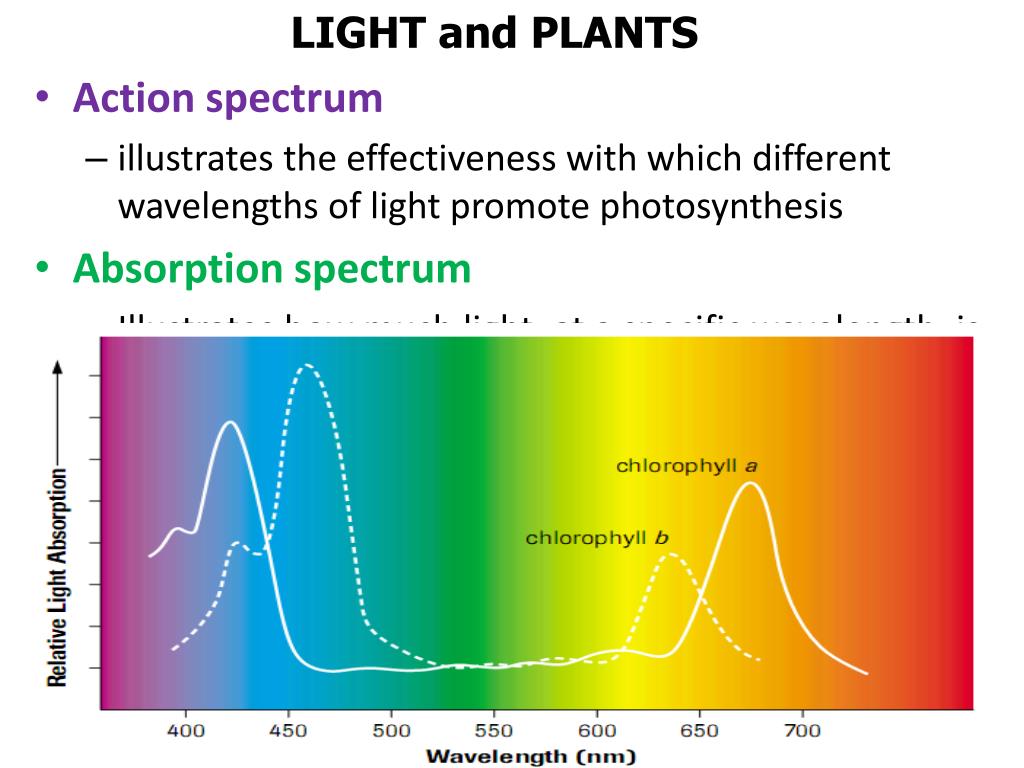
PPT Light Reactions & Photosynthetic Pigments PowerPoint Presentation ID5939545
Photosynthesis is a process by which an organism converts light energy from the sun into chemical energy for its sustenance. Photosynthesis occurs in plants, algae, and some species of bacteria. In plants, chloroplasts contain chlorophyll that absorbs light in the red and blue-violet regions of the spectrum. Photosynthesis occurs in two stages.
PUR or RQE, YouTube Video Fail Guide to lighting a planted tank
Chlorophyll d and f are found in a cyanobacteria which allows it to utilise infrared light between 700-750 nm, beyond the range normally absorbed by photosynthetic organisms. The chlorophylls are dissolved in methanol which alters their spectra compared to in vivo. The extinction coefficients for the long wavelength peak of each chlorophyll are.

PPT 3.8 Photosynthesis (Core) PowerPoint Presentation, free download ID2407626
An action spectrum is an illustration (usually showed in a graph) that reveals the rate of photosynthesis at various light wavelengths. Thus, it illustrates the wavelength that propels photosynthesis. Action spectrum was first discovered and titled by T.W. Engelmann when he was researching on algae Cladophora.
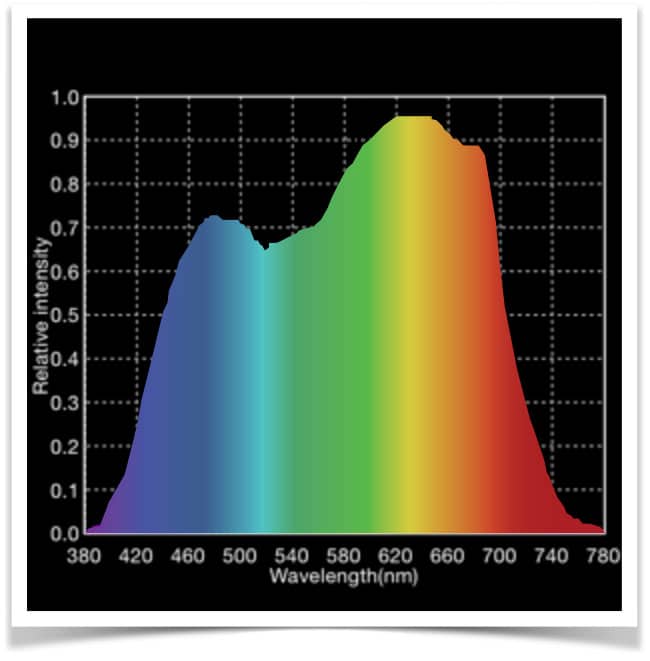
Photosynthesis Photosynthetic Spectrum excite United Kingdom
The action spectrum of photosynthesis is a graph showing the rate of photosynthesis for each wavelength of light. The rate of photosynthesis will not be the same for every wavelength of light. The rate of photosynthesis is the least with green-yellow light (525 nm-625 nm). Red-orange light (625nm-700nm) shows a good rate of photosynthesis.

Solved Photosynthetic Action Spectrum 450 500 550600 650 700
Action spectrum is a method used to evaluate the effects of different wavelengths of light on a specific process. In the photosynthetic reaction, sunlight can be used both to drive photosynthetic carbon fixation (mainly visible light) or to inhibit it (mainly ultraviolet radiation). Therefore, action spectrum can be used to measure both the.

Action Spectrum vs Absorption Spectrum Know the Differences
The action spectrum indicates the overall rate of photosynthesis at each wavelength of light There is a strong correlation between the cumulative absorption spectra of all pigments and the action spectrum Both display two main peaks - a larger peak at the blue region (~450 nm) and a smaller peak at the red region (~670 nm)

Grow Light Spectrum and Photosynthesis BoulderLamp, Inc.
The diversity of the observable effects of light spectrum variation arises through (i) the triggering of different photoreceptors, (ii) the non-uniform efficiency of spectral components in driving photosynthesis, and (iii) a variable depth of penetration of spectral components into the leaf.
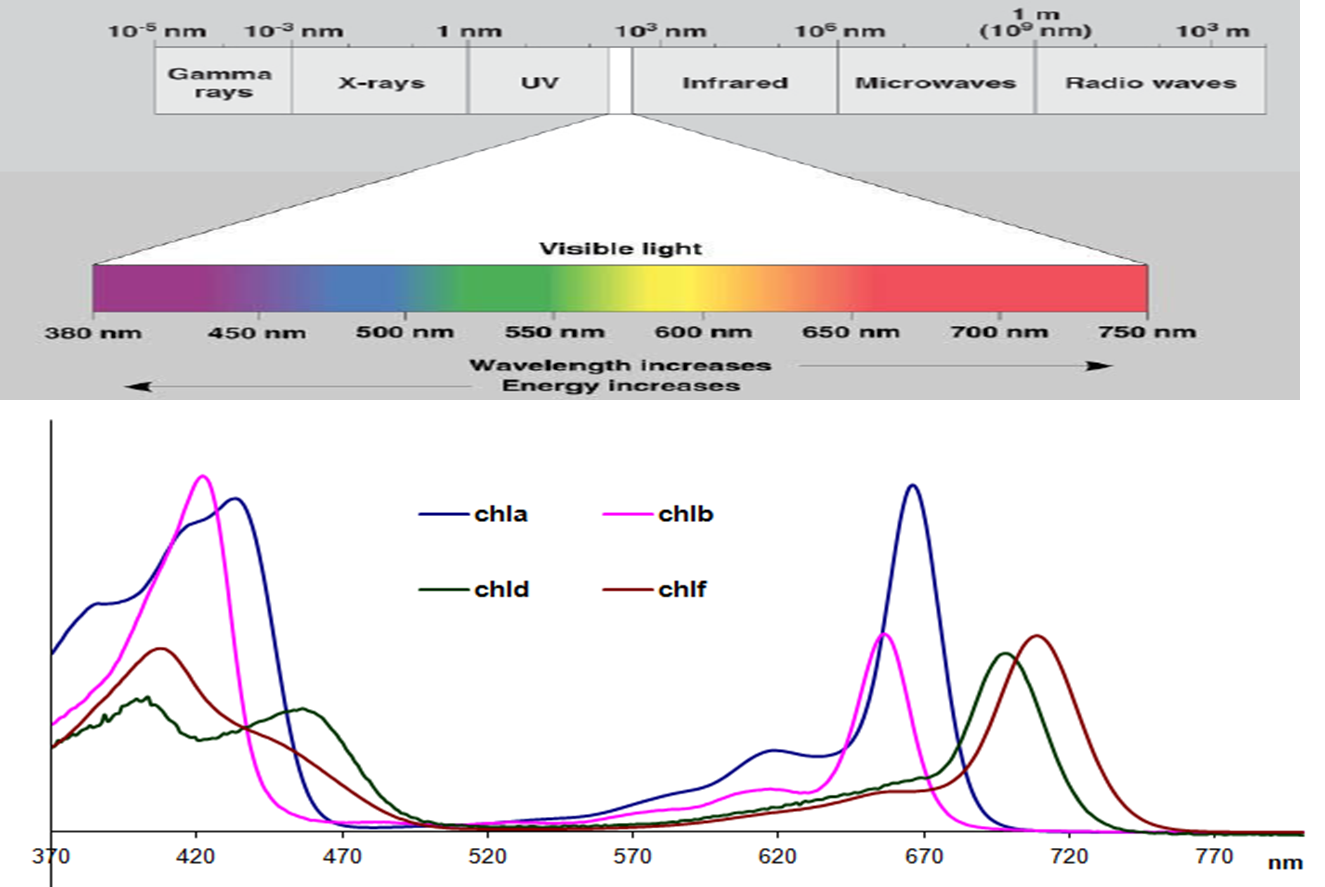
1.2.2 Chlorophyll absorption and photosynthetic action spectra Plants in Action
Mannosylation of Lipid Nanoparticles (LNP) can potentially enhance uptake by Antigen Presenting Cells, which are highly abundant in dermal tissues, to improve the potency of Self Amplifying mRNA (SAM) vaccines in comparison to the established unmodified LNP delivery system. In the current studies, we evaluated mannosylated LNP (MLNP), which were obtained by incorporation of a stable Mannose.

Chlorophyll Absorption Spectrum
The action spectrum of photosynthesis (Figure 7.7) plots the results of this experiment. Figure 7.7: The action spectrum of photosynthesis plots the rate of photosynthesis (e.g., glucose synthesis) of a plant illuminated by different wavelengths of light. The graph shows that a wide range of visible-light wavelengths support photosynthesis.

Photosynthesis Notes Class 11 Part 2 Photosynthesis Site and Pigments
Learn about the action spectrum in plants; that is, what colors of light they use for photosynthesis. We will then discuss the absorption spectrum; that is, what colors of light they.